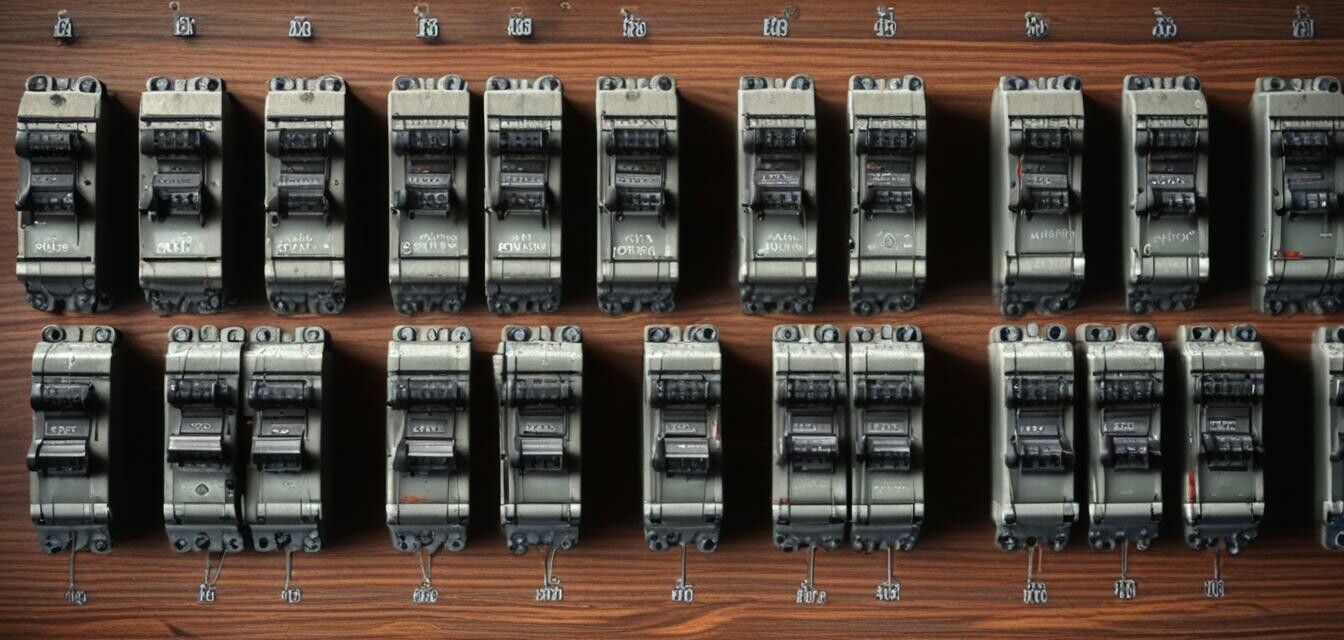
Comprehensive Guide to Circuit Breakers
Key Takeaways
- Circuit breakers are essential for electrical safety and system protection.
- There are different types of circuit breakers: standard, GFCI, and AFCI.
- Understanding the ratings is crucial for optimal performance.
- Installation tips vary based on the electrical system and breaker type.
- Proper maintenance can extend the lifespan of your circuit breakers.
Circuit breakers are crucial components of any electrical system, serving as safety devices that disconnect power during faults. With many types and ratings available, selecting the right circuit breaker can be overwhelming. This guide will provide clarity on the various types of circuit breakers, their ratings, and essential installation tips.
Types of Circuit Breakers
There are several types of circuit breakers available for different applications. Here’s a breakdown of the most common types:
| Type | Description | Common Uses |
|---|---|---|
| Standard Circuit Breaker | Basic breaker that protects against overloads and short circuits. | Residential and light commercial applications. |
| GFCI (Ground Fault Circuit Interrupter) | Protects against electrical shocks by interrupting the circuit. | Wet areas like bathrooms and kitchens. |
| AFCI (Arc Fault Circuit Interrupter) | Detects arcing faults and prevents electrical fires. | Bedrooms and living areas. |
| MCB (Miniature Circuit Breaker) | Protects against overload and short-circuiting; compact size. | Home appliances and small circuits. |
| MCCB (Molded Case Circuit Breaker) | Offers higher current protection for larger systems. | Industrial and heavy-duty applications. |
Understanding Circuit Breaker Ratings
When selecting a circuit breaker, it’s critical to understand its ratings, which indicates its capability. Key ratings include:
- Voltage Rating: Indicates the maximum voltage the breaker can handle.
- Current Rating: Shows the load current the breaker can carry without tripping.
- Breaking Capacity: The maximum fault current the breaker can interrupt safely.
Choosing the Right Ratings
Selecting the appropriate ratings involves assessing your electrical load and system voltage. Here are a few tips for making the right choice:
Tips for Choosing Circuit Breaker Ratings
- Calculate the total load connected to the circuit to determine the required current rating.
- Ensure the voltage rating matches your electrical system voltage.
- Consult electrical codes and standards to ensure compliance.
Installation Tips for Circuit Breakers
When installing circuit breakers, follow relevant safety protocols and guidelines. Here are some tips:
- Turn off the main power supply before starting the installation.
- Use appropriate tools like insulated screwdrivers to avoid electrical shocks.
- Follow the manufacturer’s installation instructions precisely.
- Test the installed breaker with an appropriate testing device.
- Label the circuit breakers clearly for easy identification in the future.
Maintenance of Circuit Breakers
Regular maintenance can help extend the life of your circuit breakers. Here are some best practices:
- Check for any signs of wear and tear, like discoloration or tripped breakers.
- Schedule periodic testing to ensure proper functionality.
- Keep the breaker panel area free from dust and moisture.
- Replace any faulty breakers immediately to maintain safety.
Pros
- Enhances safety by preventing electrical overloads.
- Provides peace of mind with reliable performance.
- Easy to reset after a trip.
Cons
- Can be costly depending on the type required.
- Improper installation can lead to further electrical issues.
- Need for periodic testing and maintenance.
Conclusion
Choosing the right circuit breaker is a vital process for any electrical system. By understanding the different types, their ratings, and essential installation tips, you can ensure safety and reliability in your electrical installations. Always consult with a professional if you're uncertain about the best choices for your specific needs.
Further Reading
For more insights into electrician supplies, check out other sections of our blog: